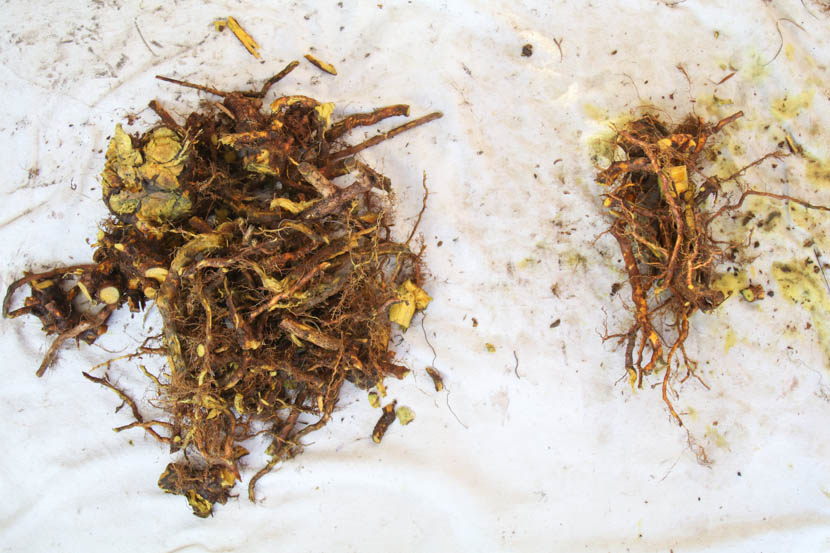
What is Japanese Barberry
Japanese barberry (Berberis thunbergii, Berberidaceae) is a common non-native plant in the eastern US. It can be invasive where it is established. I see the largest stands in the Catskills and Hudson Valley region of New York. It is commonly found where I live in Ithaca, NY, but not nearly as prevalent as downstate.
When growing in abundance, it fits the notion of ‘invasive’ as it crowds out native plants.
It is a very useful medicinal plant species, rich in berberine, and has a number of clinical applications.
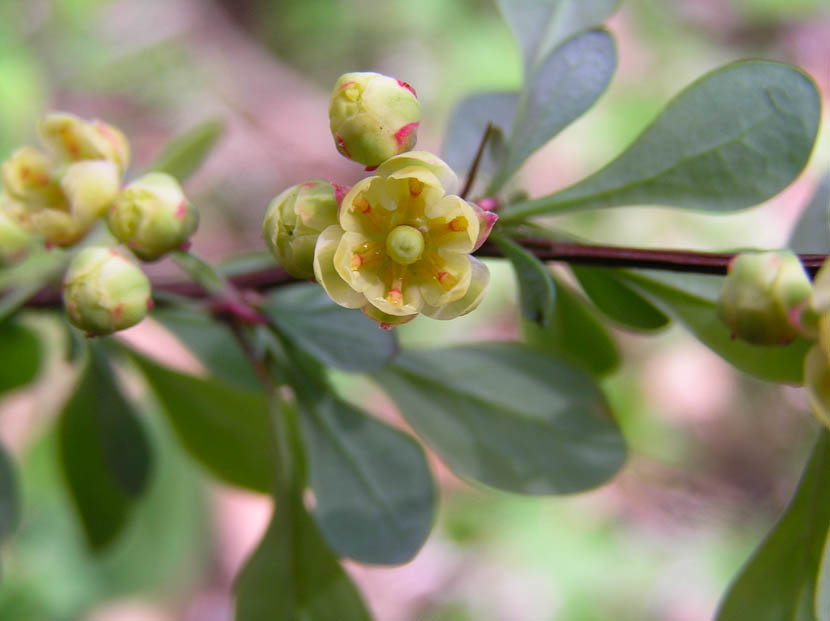
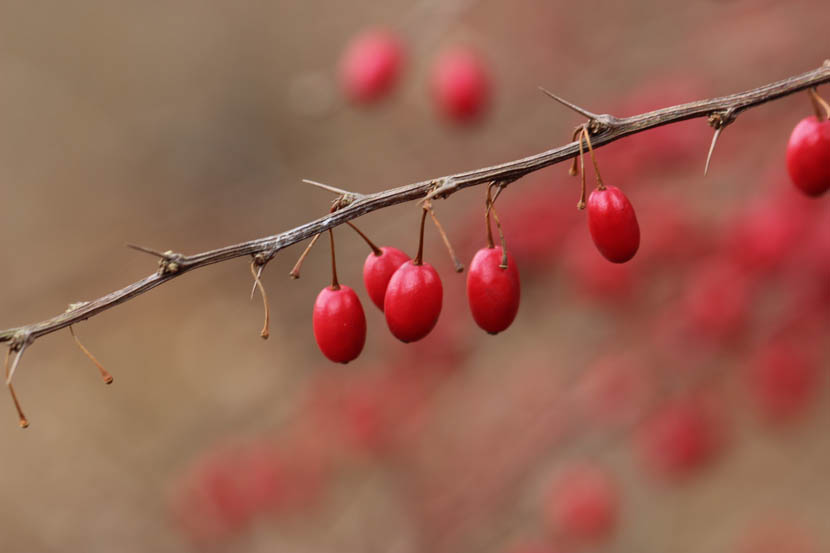
Plant Relatives Also Containing Berberine
There are a number of berberine-containing plants in the closely related families of Berberidaceae and Ranunculaceae. The most well-known is Goldenseal (Hydrastis canadensis, Ranunculaceae) which has been over-harvested everywhere it used to grow. Other plants include the Oregon graperoots (with many other common names) which are mainly found in the southwest, Rocky Mountains and West. These were once in the genus Mahonia, but in most current texts they are now placed in the genus Berberis. Other plants rich in berberine include Goldthread (Coptis trifolia, Ranunculaceae) a small woodland plant often growing in moss and Yellowroot (Xanthorhiza simplicissima, Ranunculaceae) a small shrub found growing along streams in the southeast.
One of the reasons I like using Japanese barberry is that is it the only non-native plant within the above group of plants. This is helpful as it is generally easier on the environment to gather invasive rather than native plants.

Yellowroot (Xanthorhiza simplicissima) 
Goldenseal (Hydrastis canadensis) 
Goldthread (Coptis trifolia) 
Oregon graperoot (Berberis nervosa) 
Oregon graperoot (Berberis aquifolium) 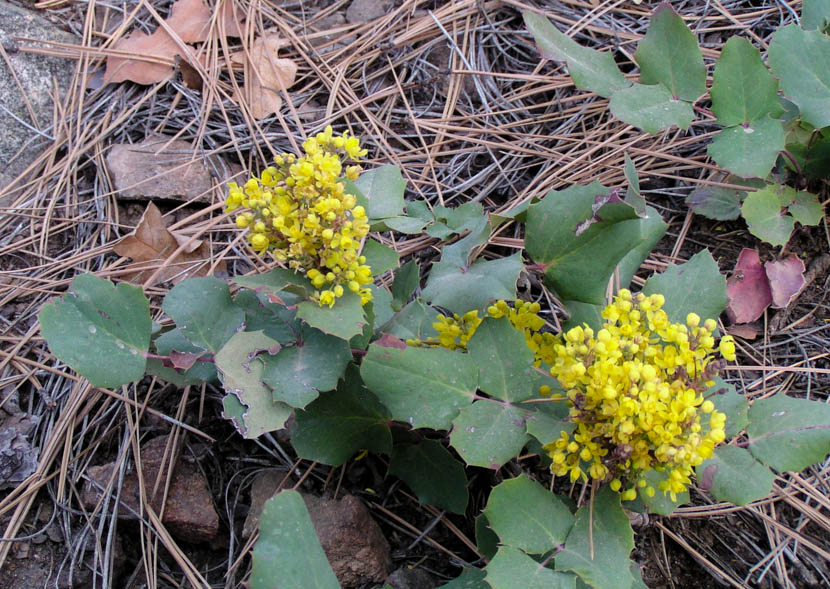
Creeping Oregon graperoot (Berberis repens)
Medicinal Applications
This is a short summary of some of the uses of Japanese barberry. A future blog will cover the medicinal applications in greater detail.
Berberine is one of the main active constituents of Japanese barberry. Berberine-containing plants have historically been used in many parts of the world and many are still commonly utilized. In the past 2 decades, there have been numerous scientific papers describing the various uses of berberine (often isolated from the plant) ranging from hyperlipidemia to nonalcoholic fatty liver disease. (To see more, search ‘berberine’ in the Cochrane Library.)
While there are numerous uses of Japanese barberry, a few of the main ways that I use this plant is for bacterial and viral infections, and increasing insulin sensitivity.
While I often use Barberry alone for its antibacterial properties, there is research showing that they increase the efficiency of some pharmaceutical antibiotics against staph infections.
Barberry is used medicinally to kill or nullify bacteria and viruses. While these are two very different ‘organisms’ (at this point, there is contention whether viruses constitute a ‘4th domain’ of life), berberine and the other plant constituents seem to have an action against both, likely by different therapeutic activity. It is used both internally and externally.
Another place I commonly use Barberry (usually as a tincture or glycerite) is to increase insulin sensitivity. This is used by people with Type II diabetes. Barberry is often used alongside other blood sugar medications such as metformin as well as other blood sugar-regulating plants
A warning-it is suggested to not use any berberine-containing plants during pregnancy due to it potentially causing uterine contractions and other possible negative effects.
Once again, there are many other medicinal applications of Barberry, Oregon graperoot, and similar plants, which will be flushed out in a future blog
The Barberry Wildcrafting Story
I was teaching at the home of Ashley Sapir Lathrop, a former student and herbalist. When I previously taught there I noticed all the Japanese barberry in the area. It is weedy in this part of the Catskills. So on the morning before I began my trip back to Ithaca, I surveyed the area for roots to gather.
There were plenty of plants of varying sizes on her land. I started with a small plant which was fairly easy to dig. I then decided to try a much larger plant. After choosing it, I started the process that unbeknownst to me would take a lot of time, tools, energy and people.
When gathering the roots of shrubby plants, I first cut away all the aboveground stems so that I can get closer to the roots to dig them out. This is even more important with Barberry as the stems are thorny.
I began trimming the stems back until they were all removed and put them in a pile. That process took about a 1/2 hour. I mainly used my short loppers which work well in these situations as they have shorter handles than a lopper but more cutting strength than pruners (though two hands are needed to operate them).
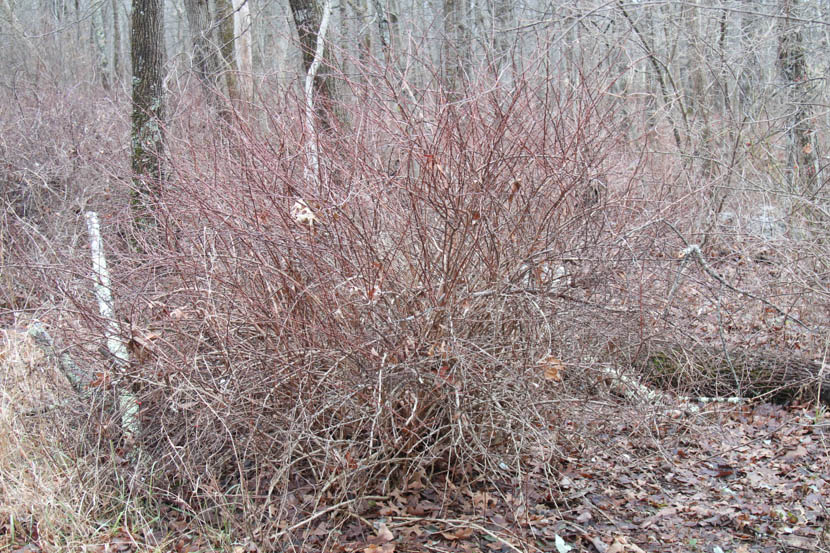
Japanese barberry 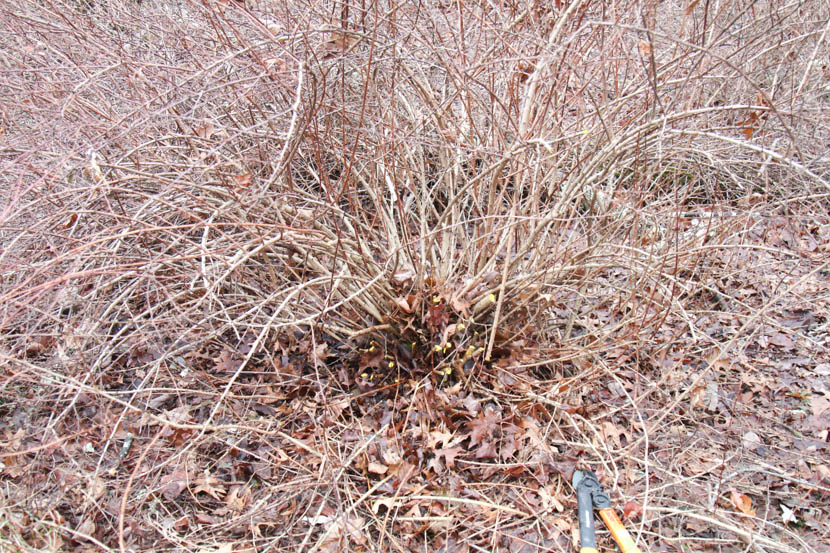
The stems partially cut back 
The stems cut back further 
All the stems trimmed off 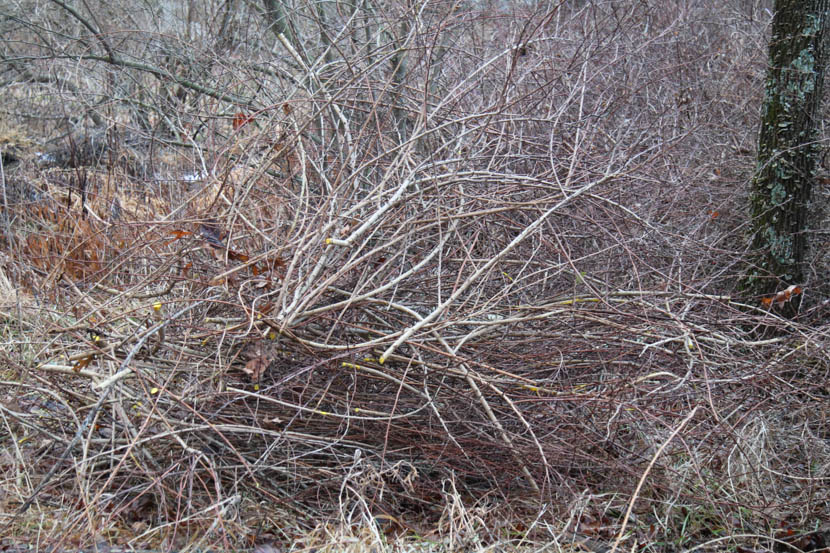
Pile of leftover stems
And Now The Real Work Begins
After trimming back all the stems, I knew that digging out the root would be difficult, but I had underestimated how much work it would be,
First I used my digging fork to loosen the soil on all sides of the root mass. I then tried leveraging the roots out with the digging fork. But after about 20 minutes, it was clear that it was not going to work. So I took out my poaching shovel and tried using that to lift out the roots. I even started bouncing on the handle see-saw style to gain more leverage (my coccyx did not appreciate that).
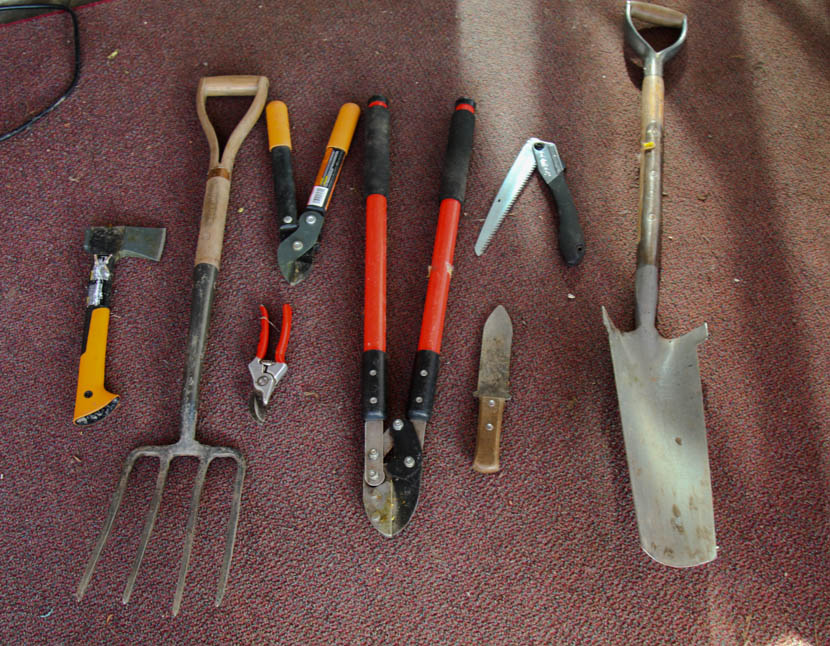
After a while, I went back into the house with little hope of extricating the root, but Ashley’s husband Rob and her son Harland said they would give it a try. Rob got his come-along (a type of winch) which helped, but not as much as we thought it would. He also got out a pry bar and after about 30 minutes of heavy-duty lifting by Rob and Harley, they finally got the root out. Thank you both once again.

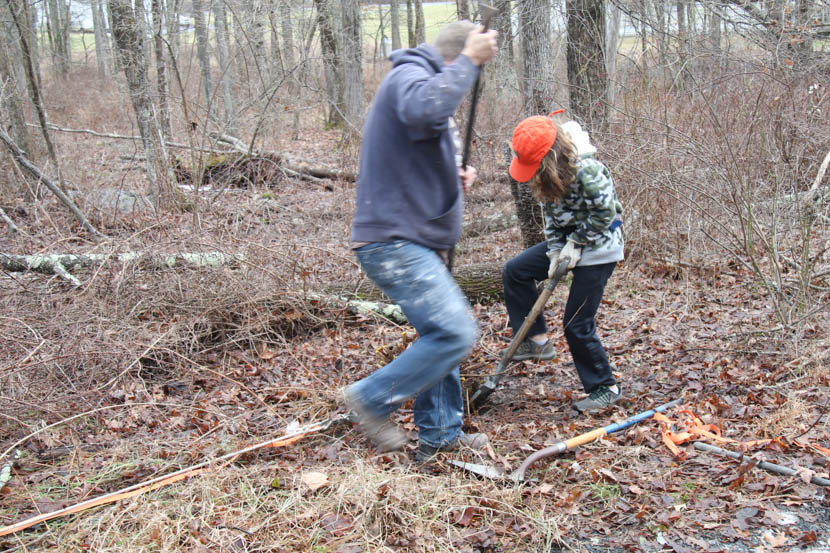
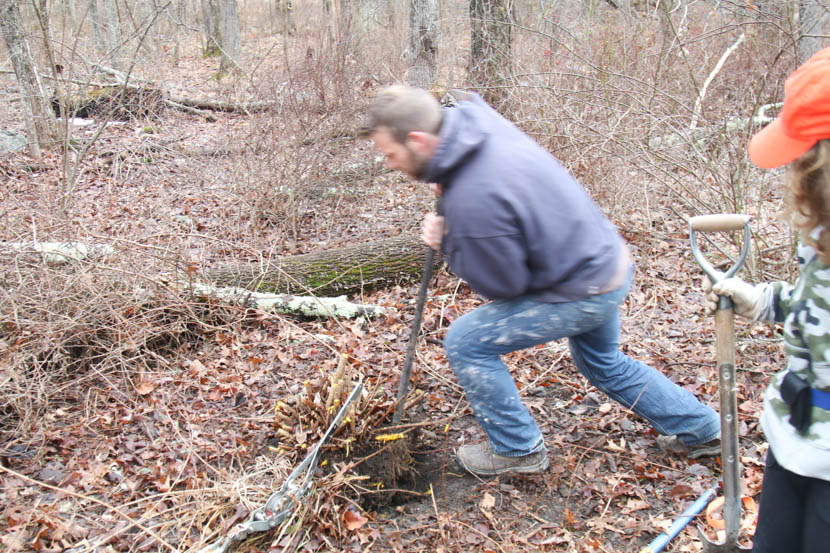
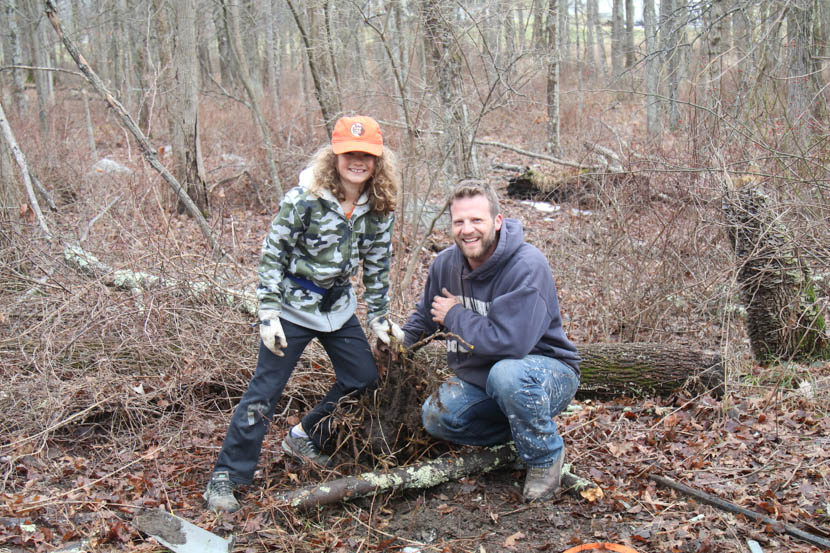
Cleaning the Root
While a lot of work went into removing the root, there was still a lot to do. Next was removing the dirt enmeshed in the root ball. Fortunately, I had Gina and Andy to help me with that. (As I said, this Berberis project took a lot of people power)
First the majority of the dirt was chiseled out of the root ball with a hori hori and other tools. Then the roots were more thoroughly cleaned in a tub of water. Some of the roots had to be split with a hatchet to remove the dirt that was stuck inside the nooks and crannies of the roots.


Processing the Root
After cleaning the roots it was time to cut them up, which was a bit of a challenge as the roots were so large. The initial tools I used were a saw and hatchet. It was a messy affair with pieces flying around as I tried to reduce the roots to a more usable proportion.
After they were small enough, I used the loppers and pruners to get them to a size that would fit into an electric grinding mill to reduce them to powder.
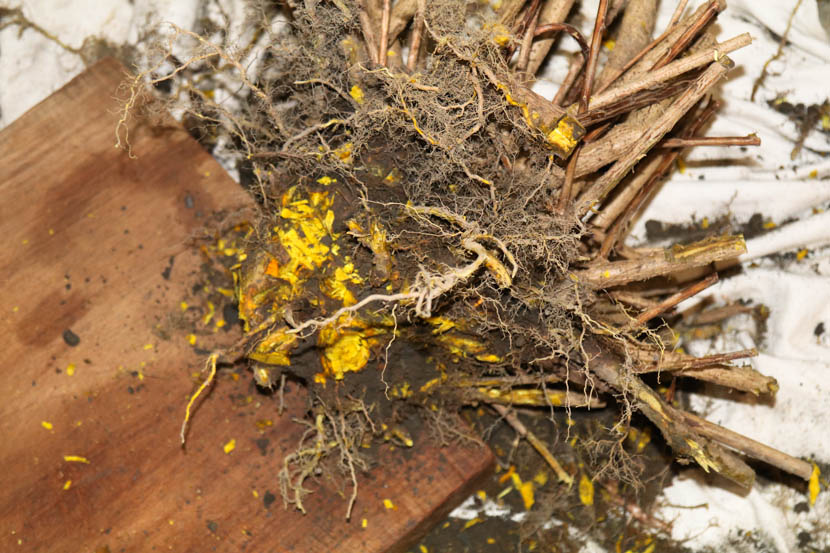
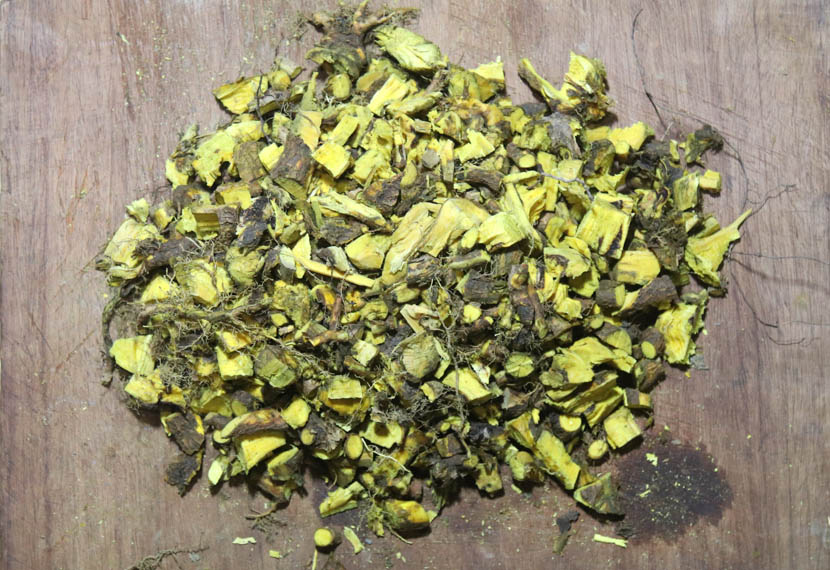
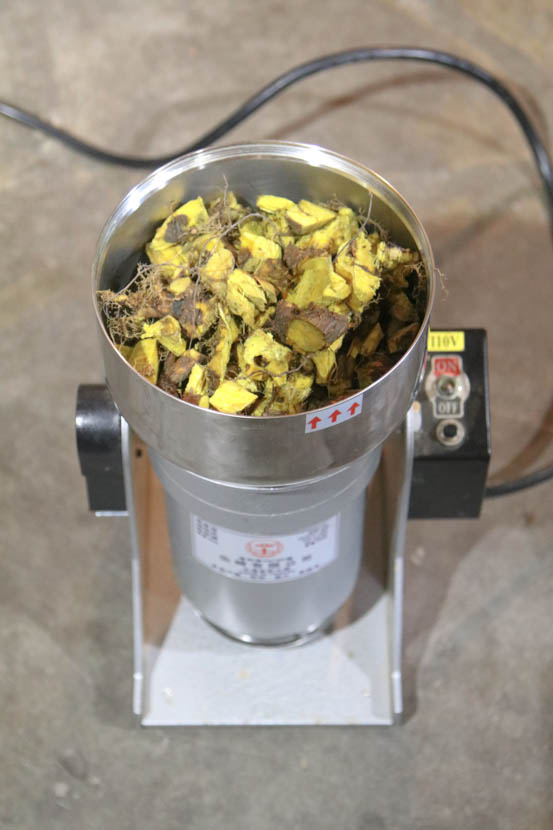
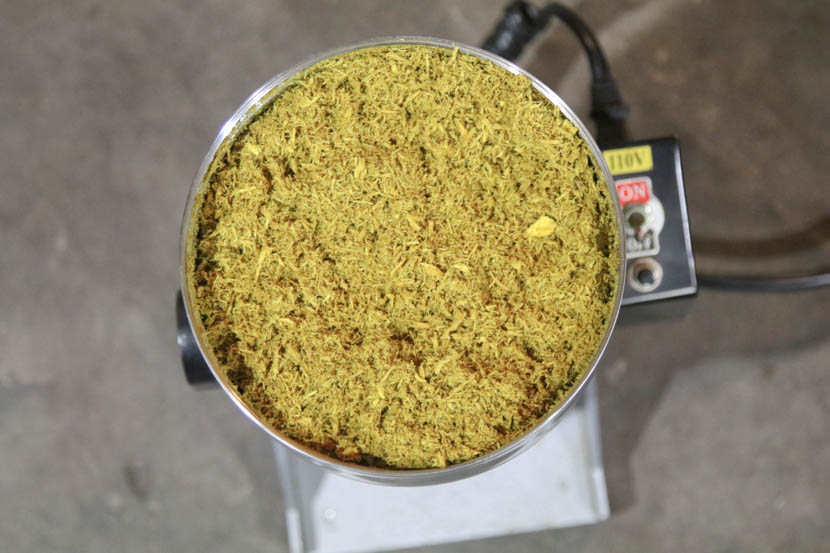
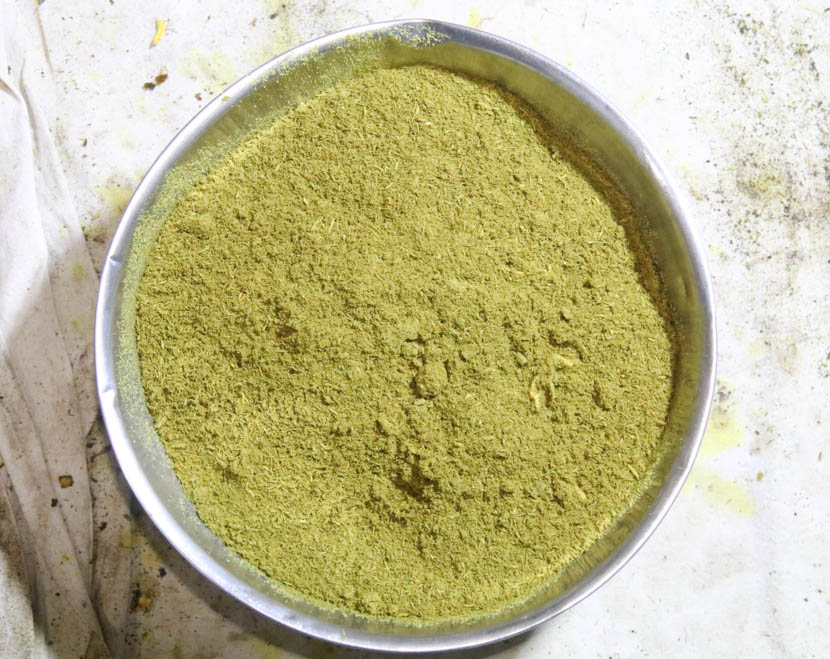
Medicine Making
Once the roots were reduced to powder, I then prepared a tincture and glycerite from them. I could have used larger pieces instead of putting them in the mill, but particularly with glycerites, it is helpful for the plants to have a larger surface area for the constituents to be extracted by the glycerin.
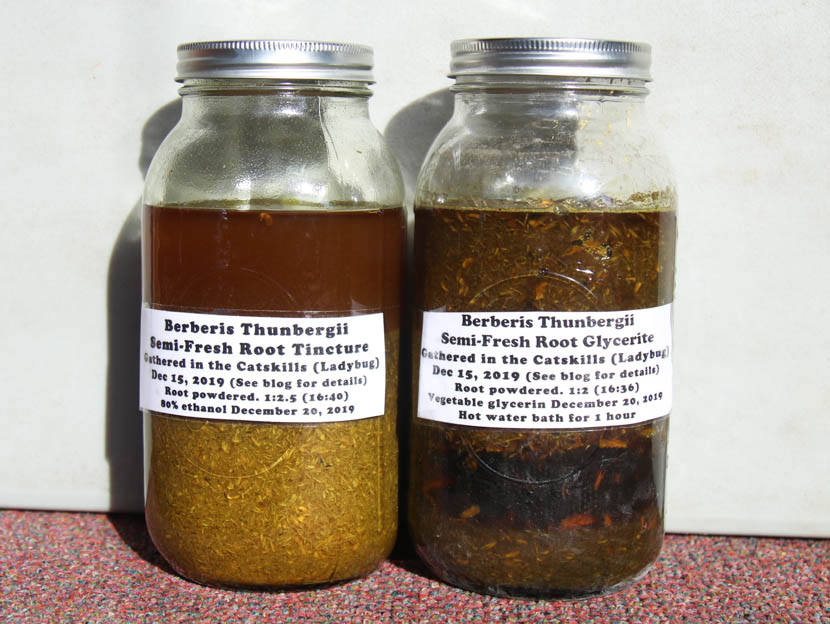
I prepared the tincture at a 1:2.5 ratio in 80% ethanol. I’ll wait a minimum of 2 weeks before pressing it out. For the glycerite, I made it at a 1:2 ratio. Looking at it now, I think 1:2.5 might have been a better choice so it is less gloopy. For the glycerite, the powdered Barberry and glycerin were put in a half-gallon canning jar and then put into a hot water bath for 1 hour to help move constituents out of the plant. It will sit in the glycerin for a 1 month or so.
Disposing of Left-Over Barberry Root
When processing potentially invasive plants, especially roots or seeds, it is important to not introduce them into a new area. When I disposed of the pieces of Barberry that were not used, I made sure to not put them in the compost, as they could potentially grow there. Instead, I put them in a burn pile. I emptied the tub of water that I used to clean the roots in a path I mow regularly to prevent any small pieces from growing.
Lessons Learned
One of the main things I learned is that it is much easier to gather the roots from smaller plants rather than working on a large one. They are easier to dig, clean and process. However, I am glad for the experience and I now have a lot of useful medicine gained from this one plant.
